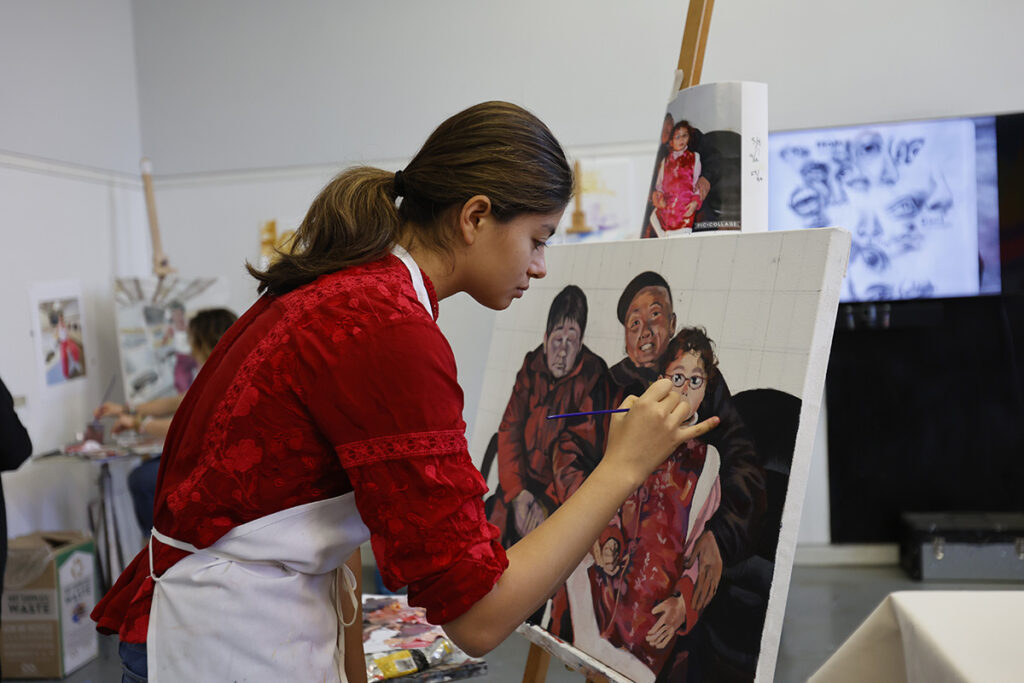Advanced artistry

Daylight falls evenly through a vaulted skylight into Room 107 of the Frederick R. Mayer Art Center. Showered in the glow are eight of Exeter’s most dedicated student artists, immersed in creation as part of ART408 Advanced Projects: Painting Portraits. Having filled their sketchbooks with ideas earlier in the term, they are well into their portraiture work, which will occupy their class time for the remainder of the term.
“The hurdles and complexities of portraiture are real, and also rewarding,” says Clowes Chair in Art and Instructor in Art Tara Lewis. “There is wisdom in working on one large piece for an entire term and evolving as an artist through a series of aesthetic decisions, critical thinking and feedback from fellow portrait ‘colleagues.’”
The expansive room is quiet, save for the sounds of brush bristles on canvas, paints being mixed or the occasional words of encouragement by Lewis or between classmates. “I often feel that for them, it feels less like a class at school and more like a professional studio experience,” Lewis says. “When they arrive to the studio for class, they dive right into their easel space with fantastic focus and a love of the process, no matter how tricky or simple it may be day to day.”
As colors swirl, figures are coaxed to life, with subjects ranging from the dearly departed to the unfamiliar. Ariana Thornton ’24 glances up, then down, then up again at a photo taped to the top of her easel. The snapshot shows Thornton as a 4-year-old in the arms of her beaming grandfather on a visit to China. Next to them, her grandmother, in a late stage of Alzheimer’s disease. The painting takes on a linear gradient from light to dark, a deliberate choice by the artist. “The brighter colors symbolize liveliness and youth,” she says. “I wanted to use more muted tones with my grandmother to represent aging and disassociation.”

Minjae Suh ’25 unfurrows her brow and relaxes her concentration slightly as she leans away from her canvas to consider her progress. “It’s supposed to be me, but I’m not worried about it looking exactly like me,” she says. The larger-than-life-size doppelgänger is posed evocatively, head tilted back, mouth open, tongue pierced by a fishhook. Suh says she was inspired by themes of freedom (or lack there of ), disability and speech, but she delights in subjectivity and the feeling that she has offered only part of the equation. “The viewer has a huge role in making art,” she says. “They finish the piece in their head. It’s up to them to make sense of it, however they want.”
As the period draws to a close, the students are that much closer to presenting their pieces as a finished product. “At the end of the term,” Lewis says, “the class installs a final exhibit, which provides a professional exhibition for the artists and a fabulous event for the school community to attend and celebrate.”
Editor’s note: This article first appeared in the winter 2023 issue of The Exeter Bulletin.